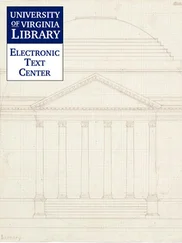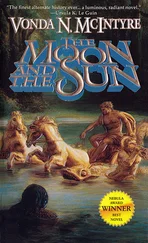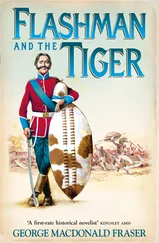The answer: They couldn’t even get onto the stinking beach. What should have been the easiest part of the plan—Cuba is an island— was its downfall.
The first attempt failed because when the team made it to their rendezvous point near Cuba, they never saw a boat in their area. Back to the Keys, and more D-Day practice in the swimming pool.
A week later, they made a second try. This time they found a boat! But it was the wrong one. A huge ship, a hundred feet long. Way too big to be their contact. Strike two.
On trip number three they didn’t even have the opportunity to find the wrong boat. The operation was canceled by the yacht captain halfway across the Florida Strait. Something about a hydraulic failure. But it was clear the order came from on high, because when they returned to the Keys, the CIA took away the (gorgeous, exquisite, magnificent) rifle and ammunition, and told the team they’d changed their minds about the mission.
Felix was not happy: “My colleagues and I couldn’t understand why the Americanos were denying our initiative. After all, it was our war, and it was our lives. And if we were willing to risk getting killed, it was our business.”
AND THEN WHAT?
Then the wheels fell off.
Newly inaugurated President Kennedy had other priorities besides Cuba, but his military and intelligence services pressed the issue. When he briefed Kennedy about the planned Bay of Pigs invasion, CIA Deputy Director of Plans Richard Bissell (the guy in charge of CIA’s covert operations) told JFK, “You can’t mañana this thing.” Castro had to be dealt with.
The Bay of Pigs operation was of course a disaster, and needless to say, the United States wasn’t going to try something like that again. In fact, a year and change later, as part of the agreement with the Soviets to end the Cuban Missile Crisis, the Kennedy administration made it official, promising that the United States would never invade Cuba to remove Fidel Castro.
But that pledge didn’t preclude covert operations. Sure, we couldn’t send in the Marines—or another army of Cuban exiles—but we could try every underhanded ploy under the Caribbean sun to kick Fidel out of power. And we would. Some were silly, some were stupid, some were downright ridiculous. None had much chance of working.
Most of the plans were developed and controlled from a unique facility in Miami. Known as JM/WAVE, the facility was a covert operations and intelligence-collecting CIA station located on the site of an old dirigible air station used during World War II. In the 1960s it was part of the South Campus of the University of Miami.
CIA stations are not supposed to be inside the United States. The National Security Act of 1947, which created the Agency, dictated that CIA was only authorized to operate outside the country. So there are CIA stations in capital cities around the world, as you would expect. Some are big, some are small. All are on foreign soil. JM/WAVE was the sole exception.
And it was quite the exception. By the end of 1962, JM/WAVE grew to become the largest CIA station in the world other than the Agency’s headquarters in Langley. It employed three to four hundred professional CIA officers, as well as an estimated fifteen thousand Cuban exiles (including Felix), all engaged in monitoring Cuba and dreaming up plans for its leader’s demise. According to some accounts, the CIA was one of Miami’s largest employers during this period (if not the largest), possibly accounting for a full third of the city’s economy. CIA spooks needed to buy houses (both personal and safe houses), cars, cover companies, furniture, groceries, marinas, hunting camps (for training), merchant shipping, exile-operated publishing houses (for producing propaganda), and more. JM/WAVE had three or four people employed just to organize and manage real estate. They even operated a gaggle of boats and aircraft, so many that the CIA maritime fleet was the third largest in the Caribbean, after only the American and Cuban navies.
Maintaining cover was important. The sign on the building couldn’t say “CIA Station.” This was a clandestine facility. The main headquarters was fronted by a false corporation called “Zenith Technical Enterprises, Inc.”
This fooled no one. It was the worst-kept secret in Miami. My father was in college. He worked at a department store. He had no security clearance or special access. He knew. So did everyone else. The only people who didn’t know that everyone knew were the people who worked there. When a national magazine publically outed JM /WAVE, the University of Miami denied knowledge of the operation (which convinced no one), and the station changed its name to the “Melmar Corporation.” The CIA in Miami would also operate under the cover names “Double-Chek Corp.,” “Gibraltar Steamship Corp.,” and “Vanguard Service Corp.”
The names changed, but nothing else did. The mission was always the same: Get Fidel Castro out of Cuba, dead or alive… but preferably dead.
On May 23, 1967, the CIA’s inspector general prepared a report for the director called “Report on Plots to Assassinate Fidel Castro.” It was super-duper top secret, and would only be formally released to the public in 1999 (still heavily redacted). It details the CIA mission to oust Castro, through direct and indirect covert action, known as Operation Mongoose. We also know a good amount regarding the CIA’s obsession with the Cuban leader through the 1975 report of the Church Committee (formally known as the “Select Committee to Study Governmental Operations with Respect to Intelligence Activities”).
Each of the wide variety of ways the U.S. government tried to kill or incapacitate Fidel could fill its own chapter in this book, so I will provide just some of the highlights here:
• Castro gave frequent radio speeches to the Cuban people. He saw it as a way to spread the ideals of the revolution, and to keep his country united against the anti-Castro exiles and their American benefactors. One CIA plan called for contaminating the air of the radio station with an aerosol spray that, when inhaled, would produce reactions similar to those of LSD. Fidel would breathe in the chemical. Live across the airwaves, he would go on a magical mystery tour. Cuba would then rise in revolt.
• A similar plan involved Fidel’s affinity for cigars. The CIA apparently laced a box of cigars with some sort of chemical that would produce a “temporary personality disorientation.” The documents don’t say how, but the idea was to get Castro to smoke one before giving a speech, and then “make a public spectacle of himself.” Cuba would then rise in revolt.
• Castro’s nickname was “The Beard.” It was a key element to his broader image as an intellectual, a revolutionary, and a man of the people. A modern-day Samson. Why not try to make it fall out? This scheme involved thallium salts, a chemical found in many depilatory (hair removal) products, such as Nair. If CIA could sprinkle these salts inside of Fidel’s shoes (maybe when he put them outside his room overnight to get them shined), his beard would fall out, and with it his mystique and machismo. Cuba would then rise in revolt.
• Fidel Castro was an avid reef and ocean diver, and so the CIA concocted several schemes to take advantage of this proclivity. (1) They tried to give him a wetsuit laced with fungus (or in some versions of the story, botulism toxin). (2) They tried to give him a snorkel system infected with tuberculosis. (3) They either planned to, or actually did, plant an explosive-laden seashell near where he liked to dive. According to the story, it was so amazingly beautiful that Castro was sure to pick it up. With its leader in pieces on the ocean floor, Cuba would then rise in revolt.
Читать дальше











